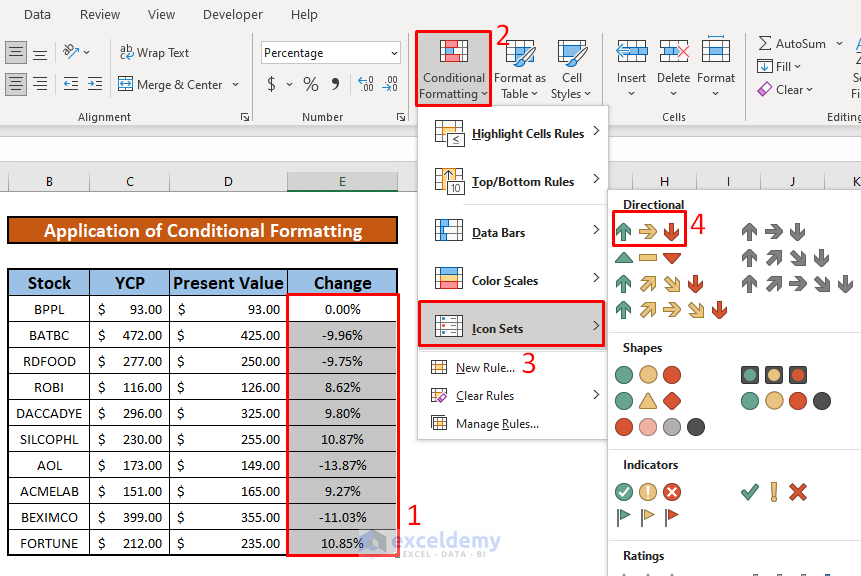Mastering the Art of Up and Down Arrows in Excel

Excel, a powerful tool in the realm of data analysis and management, offers a plethora of features to enhance productivity and streamline complex tasks. One such feature, often underutilized yet immensely valuable, is the Up and Down Arrows navigation tool. This intuitive navigation system allows users to efficiently traverse through large datasets, enhancing data manipulation and analysis processes. In this comprehensive guide, we delve into the intricacies of Excel's Up and Down Arrows, exploring their functionality, benefits, and practical applications. Whether you're a seasoned Excel user or a beginner, mastering this navigation tool can significantly elevate your data management skills.
Understanding the Excel Up and Down Arrows

The Up and Down Arrows, a built-in navigation feature in Excel, provide a convenient and efficient way to move through rows and columns of data. This tool, often overlooked by users, offers a swift and intuitive approach to data navigation, making it an essential skill for anyone working with extensive datasets.
Functionality and Features
When activated, the Up and Down Arrows allow users to move cell by cell or jump between rows and columns with ease. This navigation tool is particularly useful when dealing with large spreadsheets, enabling quick data analysis and manipulation. Additionally, Excel provides customization options for the Up and Down Arrows, allowing users to adjust settings to suit their preferences and workflow.
Benefits and Advantages
The Up and Down Arrows offer several advantages, making them an indispensable tool for Excel users. Firstly, they provide a faster and more efficient way to navigate through data, saving time and effort. Secondly, this navigation tool enhances data accuracy by reducing the risk of errors associated with manual cell selection. Lastly, the Up and Down Arrows promote a more intuitive and user-friendly approach to data management, making Excel a more accessible tool for all skill levels.
Practical Applications of the Up and Down Arrows

The Up and Down Arrows find extensive applications in various data management scenarios. Here are some practical use cases:
Data Analysis and Reporting
When analyzing large datasets for reporting purposes, the Up and Down Arrows become invaluable. They allow users to swiftly navigate through rows and columns, identify trends, and extract relevant information. This efficient navigation enhances the accuracy and speed of data analysis, leading to more timely and insightful reports.
Data Entry and Editing
Excel is often used for data entry and editing tasks. In such scenarios, the Up and Down Arrows facilitate quick movement between cells, reducing the time and effort required for data input and modifications. This tool ensures a seamless and efficient data entry process, minimizing errors and improving productivity.
Formula Application and Manipulation
Excel’s formula functionality is a powerful tool for data manipulation. The Up and Down Arrows assist in navigating through cells with formulas, enabling users to quickly review and edit formulas. This efficient navigation ensures that formula applications are accurate and consistent, leading to reliable data manipulation.
Cell Reference and Data Validation
The Up and Down Arrows play a crucial role in cell referencing and data validation. By quickly navigating through cells, users can ensure accurate cell references in formulas and validate data entries. This efficient navigation process minimizes errors and enhances the integrity of the dataset.
| Application | Description |
|---|---|
| Data Analysis | Quickly navigate through large datasets to identify trends and extract relevant information. |
| Data Entry | Efficiently move between cells for seamless data input and modifications. |
| Formula Application | Easily review and edit formulas, ensuring accurate and consistent data manipulation. |
| Cell Reference | Accurately navigate to cells for proper cell referencing in formulas. |
| Data Validation | Swiftly validate data entries to maintain data integrity. |

Tips and Tricks for Efficient Up and Down Arrow Usage
To maximize the benefits of the Up and Down Arrows, consider the following tips and tricks:
Customizing Navigation Settings
Excel allows users to customize the Up and Down Arrow navigation settings. Adjusting these settings can enhance navigation efficiency. For instance, you can set the arrows to move by a specific number of cells or rows, allowing for more precise and controlled navigation.
Combining with Keyboard Shortcuts
Excel offers a range of keyboard shortcuts that can be combined with the Up and Down Arrows for even faster navigation. For example, using the Ctrl + Arrow keys allows for quick movement between cells, rows, and columns. This combination of keyboard shortcuts and navigation arrows significantly speeds up data navigation.
Using the Arrow Keys for Precision
The Up and Down Arrows, when used in conjunction with the arrow keys on your keyboard, provide precise cell navigation. This combination allows for fine-tuned movement, ensuring accurate data selection and manipulation.
Utilizing the Status Bar for Quick Reference
Excel’s Status Bar, located at the bottom of the screen, displays the current cell reference when the Up and Down Arrows are used. This feature provides a quick and convenient way to keep track of your position in the dataset, aiding in efficient data navigation and analysis.
Conclusion: Mastering the Up and Down Arrows for Excel Proficiency
The Up and Down Arrows in Excel are a powerful yet often overlooked navigation tool. By mastering this feature, Excel users can significantly enhance their data management skills, improving efficiency, accuracy, and overall productivity. Whether for data analysis, entry, or manipulation, the Up and Down Arrows provide a swift and intuitive approach to navigating extensive datasets. As with any Excel skill, practice and familiarity with these navigation tools are key to unlocking their full potential.
How do I activate the Up and Down Arrows in Excel?
+To activate the Up and Down Arrows, simply click on the desired cell and use the arrow keys on your keyboard. Alternatively, you can use the mouse to click on the cell and then use the arrow keys.
Can I customize the Up and Down Arrow navigation settings in Excel?
+Yes, Excel allows users to customize the Up and Down Arrow navigation settings. You can access these settings by going to the File tab, selecting Options, and then navigating to the Advanced tab. Here, you can adjust the arrow key settings to suit your preferences.
Are there any keyboard shortcuts for the Up and Down Arrows in Excel?
+Yes, Excel provides several keyboard shortcuts for the Up and Down Arrows. The most common ones are Ctrl + Up Arrow to move up a cell and Ctrl + Down Arrow to move down a cell. These shortcuts allow for quick and efficient navigation through your spreadsheet.
Can I use the Up and Down Arrows for data validation in Excel?
+Absolutely! The Up and Down Arrows are particularly useful for data validation. By quickly navigating through cells, you can easily check data entries for accuracy and consistency. This ensures that your dataset remains valid and reliable.



